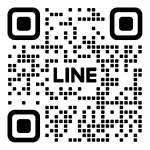It’s important to understand the difference between qualitative and quantitative research, especially if you’re new to the field. There’s a common misconception that one is ‘better’ than the other, however qualitative and quantitative research serve vastly different purposes. Read on to learn about what makes them different, how you can turn one into the other, and when you might use which method. Let’s differentiate between the two.
Qualitative analysis fundamentally means to measure something by its quality rather than quantity. When we do qualitative analysis, we are exploring how we describe something. Very often, we cannot use numbers or numerical expressions to describe those things. When we do qualitative work, we work with descriptions. We work with feelings, thoughts, perceptions. We attempt to understand motivations and behaviors.
Quantitative analysis means the opposite, to measure by quantity rather than quality. When we do quantitative analysis, we are exploring facts, measures, numbers, and percentages. When we do quantitative work, we work with numbers, statistics, formulae, and data.
Both qualitative and quantitative analysis are vitally important to public relations.
EXAMPLES OF QUALITATIVE ANALYSIS
Qualitative analysis focuses on why. Why do people behave in certain ways? Why do they make decisions? Qualitative analysis and research methods often include:
- Focus groups
- Diaries
- Open-ended questionnaires and surveys
- Unstructured interviews
- Unstructured observations (like reading social media posts)
- Case studies
Qualitative analysis tends to look very deeply at a few things to understand the why.
EXAMPLES OF QUANTITATIVE ANALYSIS
Quantitative analysis focuses on what. What happened? How many people bought this product? What percentage of people considered this brand? Quantitative analysis and research methods often include:
- Closed-ended questionnaires and surveys
- Large-scale data sets
- Analytics gathered by machines
- Random sampling
- Structured data
- Tracking software such as CRMs, marketing automation, advertising
Quantitative analysis tends to look very broadly at many things to understand the what.
THE RIGHT METHOD FOR THE RIGHT PROBLEM
Qualitative and quantitative analyses work best when blended together, a method appropriately called mixed method analysis.

We begin with qualitative research and analysis to understand the problem broadly, to define what language we should be using.
Suppose we sell coffee. We might start a research process by asking people what they like about coffee in general.
- Why do they buy the coffee they buy?
- Is cost most important to them?
- What kinds of flavors do they like?
- What’s their favorite way to drink coffee?
Once we know what questions to ask, we switch to quantitative methods to help us understand how many people have answers to our questions and what those answers are. Suppose, in our example, people said that the top reason for why they made the coffee choices they made was because of price. We’d run a survey asking people at what price they believe a good cup of coffee should be.
Once we understand the numbers and math, we switch back to qualitative to ask why. Why did we receive the results we did in the quantitative research? Why did people make the choices they made? We would survey or interview a representative, random sample of our quantitatively-analyzed audience to understand why.
In our example, suppose we found out that a majority of people chose coffee priced at $1 or less. Why? What did the people who answered this have in common – were they in similar professions? Perhaps they shared a common gender, geography, or ethnicity. We’d then look at that group and return to qualitative research to ask more questions of them, about how coffee fits into their personal budgets.
We’d then switch from qualitative to quantitative to gather more data based on our refined understanding of our audience…
… and the cycle repeats until we either have solid, defensible answers to our questions or we run into resource constraints such as time and money.
Here’s a helpful hint if you are ever stuck trying to remember the meaning
of these words: quantitative and qualitative. After all, they are almost
identical. Remember that qualitative has an “l” just like “letters” so that’s
the one that deals with categorical data (non-numerical). GoodLuck!
Cradits: https://www.shiftcomm.com/blog/understanding-qualitative-quantitative-analysis/






